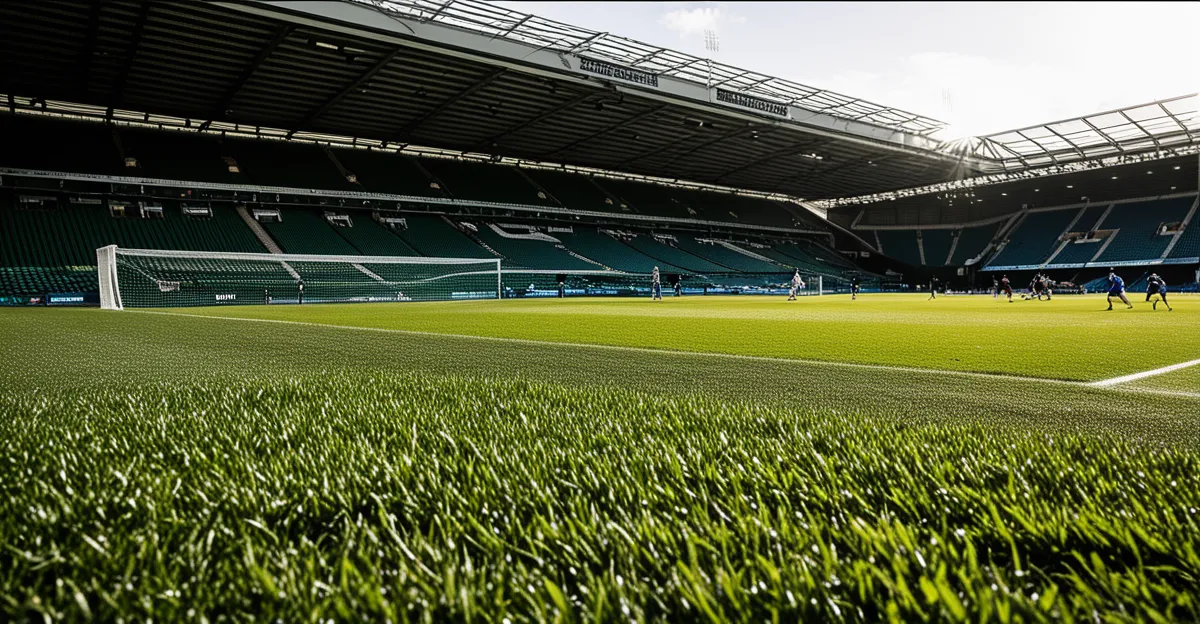Evolution of UK Sports Facilities: A Chronological Overview
The history of sports facilities in the UK traces a dynamic path from modest beginnings to sophisticated venues integral to modern sport. Initially, the UK sports infrastructure timeline is marked by simple grounds hosting local events during the 19th century. Early sporting venues primarily served community needs, reflecting the grassroots passion for football, cricket, and rugby.
As the decades progressed, the chronological development of sports venues witnessed significant milestones. The early 20th century saw purpose-built stadiums emerge, symbolising growing public interest and commercial potential. Post-World War II reconstruction spurred investments, modernising structures to accommodate expanding audiences. For example, the mid-1900s introduced concrete terraces replacing wooden stands, enhancing durability and capacity.
In the same genre : What Are the Economic Benefits of Investing in UK Sports Infrastructure?
Moving into the late 20th and early 21st centuries, the timeline accelerates with groundbreaking projects aligned with societal changes. Key cultural shifts prompted governments and private investors to prioritise multifunctional, accessible, and safety-conscious venues. The evolution culminated in facilities integrating advanced technologies, reflecting the UK’s commitment to hosting global events and nurturing athletic excellence.
This chronological progression underscores how each era’s priorities influenced the history of sports facilities UK, revealing a narrative of adaptation and ambition intertwined with social and economic tides.
In the same genre : How Do UK Sports Programs Enhance Educational Outcomes?
Government Policies and Major Investments that Shaped Development
Government policies have played a pivotal role in driving sports infrastructure investment UK forward. The introduction of dedicated funding streams throughout the late 20th century marked a clear shift, prioritising the development and renovation of venues nationwide. For instance, sports policy UK frameworks increasingly emphasized inclusivity, accessibility, and community benefit, ensuring that investments met evolving public needs.
In the government sports funding history, substantial capital injections enabled both grassroots facility improvements and large-scale stadium upgrades. Public sector contributions often partnered with private investments, collectively advancing major sporting facilities. Significant projects benefited from these collaborations, including renovations of historic grounds and creation of multifunctional sports centres.
Economic and political contexts heavily influenced these trends. Periods of economic growth typically corresponded with increased investments, while austerity measures sometimes constrained funding flows. For example, strategic funding aligned with hosting international events bolstered infrastructure enhancements, reflecting a symbiosis between government priorities and sporting ambitions.
This synergy of policy and finance drove a sustained expansion and modernisation of UK venues. As a result, sports infrastructure investment UK continues to adapt, responding to changing cultural and societal priorities established through government-led strategies.
Technological Advancements and Modernisation Initiatives
Technological evolution has radically reshaped sports technology UK and modern sports venues UK, ushering a phase where innovation in sports infrastructure drives performance and fan experience. Advances in materials and construction methods now allow for stadiums that are safer, more sustainable, and adaptable to diverse uses.
One critical area is the adoption of smart technologies throughout venues. Modern stadiums utilize sensor networks and IoT systems to monitor crowd flow, enhance security, and optimise energy consumption, aligning with broader sustainability goals. Training centres integrate data analytics and virtual reality to boost athlete preparation, demonstrating how sports technology UK bridges physical and digital excellence.
Safety and accessibility improvements reflect evolving standards. For example, facilities now feature state-of-the-art evacuation systems and inclusive designs tailored to diverse audiences. These upgrades not only comply with regulations but enhance user experience, highlighting innovation in sports infrastructure’s role in community engagement.
Moreover, construction innovations such as modular components facilitate quicker renovations and multipurpose functionality. This flexibility proves essential in venues hosting varied sports and events, supporting the UK’s commitment to efficient facility use.
In summary, the modern sports venues UK landscape exemplifies how technology fuels continual progress. By embedding cutting-edge systems, these advancements elevate the standards of safety, sustainability, and versatility for years to come.
Landmark Projects and Their Lasting Impact
Landmark projects have profoundly shaped the legacy of UK sports facilities. Iconic stadiums like Wembley, Old Trafford, and London Stadium stand as testaments to evolving design and functionality standards. For instance, the 2012 Olympics catalysed substantial upgrades, transforming the London Stadium into a multipurpose venue that continues to serve elite athletics and community events.
Analysis of these venues reveals how legacy projects UK sports often combine grandeur with sustainability and adaptability. Wembley’s redevelopment introduced retractable roofs and advanced broadcasting capabilities, setting benchmarks for global venues. Similarly, Old Trafford’s steady expansions reflect a commitment to balancing heritage with modern spectator expectations.
The impact of hosting major international tournaments, such as Euro ’96, extends beyond event timelines. These infrastructure investments bolster local economies and embed long-term community benefits. Legacy projects emphasize inclusivity and multifunctionality, ensuring facilities accommodate diverse sporting and cultural activities.
In essence, these major projects have not only enhanced the UK’s ability to host prestigious events but have also influenced subsequent development cycles. The standards set by Olympic Games UK infrastructure and other landmark venues continue to guide planning, encouraging innovation and ambitious visions in sports infrastructure nationwide. This sustained influence secures the UK’s position at the forefront of modern sports facility development.
Comparative Insights: Then and Now
Examining sports facilities then and now UK reveals profound transformations in design, capacity, and functionality. Earlier venues were often single-purpose structures with limited amenities. Today’s infrastructure comparison UK highlights multipurpose, technologically advanced arenas tailored to diverse sports and community needs.
Capacity growth is striking. Historic grounds typically held tens of thousands in standing terraces. Modern stadiums prioritize all-seater designs for safety and comfort, sometimes accommodating larger audiences through enhanced vertical and spatial arrangements without sacrificing intimacy. This evolution aligns with the sports evolution UK toward spectator experience and regulatory compliance.
Facility offerings have expanded dramatically. Contemporary venues incorporate advanced training centres, media facilities, and hospitality suites, reflecting both commercial imperatives and athlete-centred priorities. The rise of community-focused designs also boosts local engagement, providing accessible spaces for amateur sports and social activities.
Moreover, sustainability and accessibility are central to modern construction. Innovations such as renewable energy integration and inclusive infrastructure underscore the ethos shift from purely spectator venues to community assets.
In summary, the sports facilities then and now UK framework showcases a journey from basic grounds to sophisticated hubs. This evolution evidences the UK’s commitment to supporting athletes, fans, and communities through adaptable, safe, and forward-thinking infrastructure.
Influential Events Reshaping UK Sports Infrastructure
Major sporting events UK impact have been pivotal in transforming the nation’s sports facilities. The formation of the Premier League in 1992 triggered substantial upgrades as clubs sought to meet stringent stadium standards for safety, comfort, and broadcast requirements. This Premier League formation infrastructure ushered in a new era prioritising commercial viability alongside fan experience.
Hosting global tournaments like the 2012 Olympics, Euro ’96, and various World Cups also significantly accelerated infrastructure development. These events necessitated world-class venues, pushing investments in renovation and new builds that benefitted both elite athletes and communities long term. The Olympics UK effect was particularly profound, establishing sustainable legacies such as the London Stadium’s multipurpose use and improved urban accessibility.
Cultural shifts towards inclusivity and technology further drove infrastructure modernisation. Emphasising safety, accessibility, and environmental sustainability became standard, reflecting broader societal values. Together, these influential events helped Britain evolve its sporting venues into global showcases, fostering enhanced fan engagement and athlete performance.
In sum, the synergy of the Premier League’s rise and hosting prestigious tournaments combined with cultural changes to reshape UK sports infrastructure timeline. These moments acted as catalysts, embedding ambition and innovation into ongoing development strategies.











